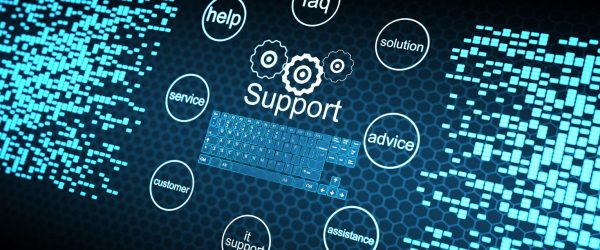What is GDPR and Why Do Businesses Need to Comply with This Regulation?
In today’s digital age, data protection has become a critical concern for businesses worldwide. The General Data Protection Regulation (GDPR) is a comprehensive set of regulations enacted by the European Union (EU) to safeguard the privacy and personal data of EU citizens. It applies not only to businesses operating within the EU but also to those outside the EU that handle EU citizens’ data.
GDPR aims to empower individuals with greater control over their personal data while imposing strict obligations on businesses to handle this data responsibly. Failure to comply with GDPR can result in hefty fines, damaged reputation, and loss of customer trust.
Key Requirements to Develop GDPR-Compliant Software
Developing GDPR-compliant software necessitates adherence to several key requirements to ensure the protection and privacy of users’ data. These requirements include:
- GDPR Technical Requirements : GDPR sets forth specific technical requirements that software developers must adhere to, such as implementing robust security measures, ensuring data encryption, and incorporating mechanisms for data breach notification.
- Data Mapping and Classification : Understanding the flow of data within the software and categorizing it based on its sensitivity is crucial for GDPR compliance. This involves mapping out where data is stored, how it’s processed, and who has access to it.
- Data Minimization : GDPR emphasizes the principle of data minimization, which means collecting and processing only the data necessary for a specific purpose. Software should be designed to minimize the collection and retention of personal data to reduce the risk of unauthorized access or misuse.
- User Consent Mechanism : Obtaining explicit consent from users before collecting or processing their personal data is a fundamental requirement of GDPR. Software should include clear and granular consent mechanisms, allowing users to choose which data they’re comfortable sharing and for what purposes.
- Data Subject Rights : GDPR grants individuals certain rights over their personal data, including the right to access, rectify, and delete their information. Software must facilitate the exercise of these rights by providing users with easy-to-use tools to manage their data.
- Third-Party Services Management : If the software integrates third-party services or shares data with external entities, developers must ensure that these services comply with GDPR regulations. Contracts with third parties should include provisions for data protection and privacy.
- Privacy by Design and by Default : GDPR promotes the principles of privacy by design and by default, meaning that privacy considerations should be integrated into the software development process from the outset. Developers should implement privacy-enhancing features by default and prioritize user privacy throughout the software lifecycle.
- Data Security Measures : Ensuring the security of personal data is paramount under GDPR. Software developers must implement robust security measures, such as encryption, access controls, and regular security audits, to protect against unauthorized access, breaches, or misuse of data.
- Data Encryption : One of the fundamental technical measures mandated by GDPR is data encryption. Encryption involves converting data into a secure format that can only be accessed or deciphered with the appropriate decryption key. By encrypting personal data both in transit and at rest, businesses can mitigate the risk of unauthorized access or exposure in the event of a breach.
- Data Breach Notification : GDPR requires businesses to promptly notify relevant authorities and affected individuals in the event of a data breach that poses a risk to their rights and freedoms. Software developers must incorporate mechanisms for detecting and reporting breaches, along with protocols for notifying the appropriate parties within the required timeframe.
- Cookie Collection Policy : Cookies are commonly used to track user behavior and preferences online, making them subject to GDPR regulations. Businesses must provide clear and comprehensive information about their use of cookies, including obtaining users’ consent before setting non-essential cookies. Software should include mechanisms for managing cookie preferences and providing users with control over their data.
- Data Protection Impact Assessments (DPIAs) : DPIAs are systematic assessments of the potential impact of data processing activities on individuals’ privacy and data protection rights. GDPR mandates conducting DPIAs for high-risk processing activities to identify and mitigate potential risks to data subjects. Software developers should incorporate tools and templates for conducting DPIAs within their software to ensure compliance with this requirement.
- Cross-Border Data Transfers : Transferring personal data outside the EU or European Economic Area (EEA) is subject to strict GDPR regulations to ensure the continuity of data protection standards. Businesses must implement appropriate safeguards, such as standard contractual clauses or binding corporate rules, when transferring data to countries without an adequate level of protection. Software should facilitate secure cross-border data transfers while ensuring compliance with GDPR requirements.
- Avoid Security Questions : While security questions have traditionally been used for authentication purposes, GDPR discourages their use due to the potential risk of unauthorized access to personal data. Instead, businesses should implement more secure authentication methods, such as multi-factor authentication, to verify users’ identities without compromising their privacy.
- Right to Portability : GDPR grants individuals the right to receive a copy of their personal data in a structured, commonly used, and machine-readable format, as well as the right to transmit this data to another controller. Software developers must enable users to exercise their right to data portability by providing tools for exporting and transferring their data seamlessly.
- Right to Be Forgotten : Under GDPR, individuals have the right to request the erasure of their personal data under certain circumstances, commonly referred to as the right to be forgotten. Software should include mechanisms for users to easily request the deletion of their data and for businesses to fulfill these requests promptly.
- Data Removal from Payment Gateways : When processing payments, businesses often store users’ payment information, which falls under the purview of GDPR. Software developers must ensure that payment gateways and processing systems comply with GDPR requirements, including the secure storage and deletion of payment data upon request.
- Software Testing for GDPR Compliance : Thorough testing is essential to ensure that software meets GDPR compliance requirements and operates securely. Software developers should conduct comprehensive testing, including vulnerability assessments, penetration testing, and GDPR-specific tests, to identify and rectify any compliance issues before deployment.
- Regular Audits and Updates : GDPR compliance is an ongoing process that requires regular audits and updates to adapt to changing regulations and evolving threats. Software developers should establish processes for conducting periodic audits of their software’s compliance status and implementing updates or patches as needed to address any identified vulnerabilities or non-compliance issues.
Steps to Build a GDPR-Compliant Software
Developing GDPR-compliant software requires a structured approach that encompasses various stages of the software development lifecycle. Below are the key steps involved in building software that adheres to GDPR requirements:
- Requirements Analysis : The first step in building GDPR-compliant software is to conduct a thorough analysis of the regulatory requirements and business needs. This involves identifying the types of personal data collected, the purposes for which it’s processed, and the applicable GDPR provisions. By understanding these requirements upfront, developers can design software that meets both business objectives and regulatory standards.
- Architecture Planning : During the architecture planning phase, developers design the overall structure and components of the software system. It’s essential to incorporate privacy and data protection principles into the software architecture, such as data minimization, encryption, and access controls. This ensures that GDPR requirements are built into the foundation of the software from the outset.
- UI/UX Design : User interface (UI) and user experience (UX) design play a crucial role in GDPR compliance by ensuring that users can easily understand and manage their data privacy settings. Designers should create intuitive interfaces that facilitate user consent, data access requests, and other GDPR-related interactions, while also prioritizing transparency and clarity.
- Software Development : During the development phase, engineers translate the design specifications into functional software code. It’s essential to follow best practices for secure coding and incorporate GDPR-specific features and functionalities, such as consent management tools, data encryption libraries, and audit trails. Regular code reviews and testing help identify and address any compliance gaps early in the development process.
- Testing and Quality Assurance : Testing is a critical phase in ensuring the reliability, security, and compliance of the software. QA teams should conduct comprehensive testing, including functional testing, security testing, and GDPR-specific testing, to validate that the software meets all regulatory requirements and operates as intended. This may involve automated testing tools, manual testing procedures, and user acceptance testing to verify compliance with GDPR provisions.
- Software Deployment : Once the software has been developed and thoroughly tested, it’s ready for deployment to production environments. During deployment, developers must ensure that all necessary GDPR compliance measures are in place, such as secure hosting environments, data encryption protocols, and user authentication mechanisms.
Ongoing monitoring and maintenance are essential to address any compliance issues that may arise post-deployment.
Challenges to Implement GDPR Compliance
Implementing GDPR compliance poses various challenges for businesses, ranging from organizational hurdles to technical complexities. Understanding and addressing these challenges is essential to ensure effective compliance with GDPR requirements. Some common challenges include:
- Lack of Awareness and Resources : Many businesses struggle with a lack of awareness and resources when it comes to GDPR compliance. SMEs, in particular, may find it challenging to navigate the complex regulatory landscape and allocate sufficient resources to implement compliance measures. Educating stakeholders, investing in training programs, and leveraging external expertise can help mitigate this challenge.
- Data in Paper-Based Documents : Traditional paper-based documents present a unique challenge for GDPR compliance, as they often contain sensitive personal data that’s difficult to manage and secure. Digitizing and implementing robust data management processes for paper-based records can help businesses ensure compliance while minimizing the risk of data breaches or non-compliance.
- Insecure Practices of Document Exchange : Sharing and exchanging documents securely is essential for GDPR compliance, yet many businesses still rely on insecure methods such as email or physical mail. Implementing secure file sharing solutions, encryption protocols, and access controls can help mitigate the risk of unauthorized access or exposure of sensitive data during document exchange.
- Cost to Develop GDPR-Compliant Software : Developing GDPR-compliant software can be costly, particularly for smaller businesses with limited budgets and resources. Costs may include investments in technology, training, compliance audits, and ongoing maintenance. However, the cost of non-compliance, including fines, legal fees, and reputational damage, far outweighs the upfront investment in GDPR compliance measures.
How Ezeiatech Helps Businesses Become GDPR-Compliant
Ezeiatech offers comprehensive GDPR compliance solutions tailored to the unique needs of businesses across industries. Our experienced team of consultants provides expert guidance and support throughout the compliance journey, from initial assessment to ongoing monitoring and maintenance. With Ezeiatech’s proven methodologies and cutting-edge technologies, businesses can streamline the process of achieving and maintaining GDPR compliance while minimizing costs and risks.
FAQs
- What is the penalty for non-compliance with GDPR?
Businesses that fail to comply with GDPR may face fines of up to 4% of their global annual turnover or €20 million, whichever is higher. Additionally, non-compliance can result in reputational damage, loss of customer trust, and potential legal action. - Do GDPR requirements apply to my business if it’s located outside the EU?
Yes, GDPR applies to any business that processes personal data of individuals located within the EU, regardless of where the business is located. This means that businesses outside the EU must comply with GDPR if they offer goods or services to EU residents or monitor their behavior. - What steps can I take to ensure GDPR compliance for my business?
To ensure GDPR compliance, businesses should conduct a thorough assessment of their data processing activities, implement appropriate technical and organizational measures to protect personal data, obtain consent from data subjects, and establish processes for responding to data subject requests and data breaches. - How often should GDPR compliance be reviewed and updated?
GDPR compliance should be reviewed and updated regularly to adapt to changes in regulations, business practices, and technological advancements. Businesses should conduct periodic assessments, audits, and training programs to ensure ongoing compliance with GDPR requirements.
Thank you for reading. For continued insights and in-depth discussions, please follow our blogs at Ezeiatech.







